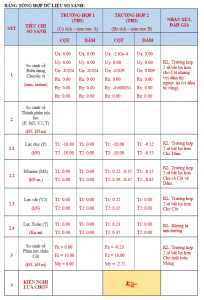Building ventilation the state of the art
Contents
1 Natural Ventilation in the Urban Environment
Introduction
The physics of natural ventilation
Natural ventilation strategies
The cooling potential of ventilation
Alteration of ventilation potential in the urban environment
2 Analytical Methods and Computing Tools for Ventilation
Introduction
Earlier reviews
Naming, rigour and notation
Multi-zone nodal methods
Multi-zone loop methods
Sub-zone and embedded modelling methods
Multi-zone multi-physics analysis
3 Ductwork, Hygiene and Energy
Introduction
Duct hygiene and health aspects
Energy performance
Maintenance
Performance checks
Future Challenges
4 Building Air Tightness: Research and Practice
Introduction
The hydrodynamics of leaks
Fan pressurization measurement techniques
Air tightness metrics
Air tightness data
Dynamic air flow
5 Ventilation Performance Indicators and Targets
Introduction
The hierarchy of ventilation principles
Application of the hierarchy ventilation performance indicators
Available data and suggested targets
6 Heat Recovery
Introduction
Types and areas of use
Moisture recovery and frost protection
Heat recovery performance
Calculating energy savings and profitability
Choice of heat recovery for different building types
Commissioning, operation and maintenance
7 Hybrid Ventilation in Non-Residential Buildings
Introduction
Hybrid ventilation strategies
Hybrid ventilation design
Practical solutions
Hybrid ventilation control
Hybrid ventilation airflow process
Future challenges and trends in research and development
8 Ventilation for Comfort and Cooling: The State of the Art
Introduction
Cooling buildings: Recent trends
Ventilation for cooling: Basic principles
Ventilation and thermal comfort
Designing for natural ventilation and cooling
Constraints and limitations of ventilative cooling techniques
Use of fans and mechanical ventilation systems to provide thermal comfort
Free-cooling techniques
Hybrid systems
9 The Effect of Ventilation on Health and Other Human Responses
Introduction
Ventilation and indoor air quality
The role of ventilation in controlling pollutants in the indoor environment
Ventilation rates and human responses in the office environment
Ventilation in residences
Ventilation and temperature control
Cleaning with recirculating and filtering air
Association of heating, ventilating and air-conditioning (HVAC) system types with sick building syndrome (SBS) symptoms
Pollutants in air-handling equipment and systems
Operation and maintenance
Ventilation and pressure differences
Future research needs
10 Advanced Components for Ventilation
Introduction
The role of infiltration
Air inlets
Windows
Vents
Inlet grilles
Pressure-controlled air inlets
Passive air inlets
Active air inlets
Humidity-controlled inlets
Pollutant-controlled inlets
Temperature-controlled inlets
Comfort
Remarks
Integration within the ventilation system
Integration with the heating system
Mechanical supply units per room
Mechanical supply valves
Extract valves
Pressure-controlled valves
Ductwork
Fans
Heat recovery units
Roof outlets
Photovoltaic applications
11 Ventilation Standards and Regulations
Introduction
Policy in standards and regulations related to ventilation
Standards and regulations in the European Union
North American standard for residential ventilation (ASHRAE 62)
New challenges in the context of ventilation standards
Appendix 1 European Committee for Standardization (CEN) Documents TC 156
Appendix 2 Energy Performance of Buildings Directive (EPBD)
Building ventilation the state of the art












